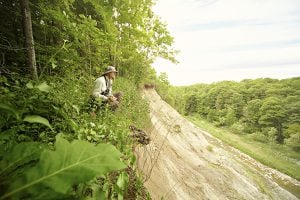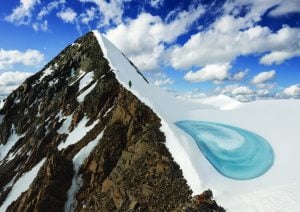It was never going to last forever. But the house the Swiss guides built high in the mountains — masonry on the outside, plywood on the inside, a kitchen, an attic, one dormitory for men and another for women — followed the lesson of the Christian parable exactly. They built on rock — on the narrow Abbot Pass, 2,925 metres above sea level, between Lake O’Hara in Yoho National Park and Lake Louise in Banff National Park, on the Continental Divide.
Just bringing the building materials to the site involved heroic levels of organization and labour. They hired wranglers with horses to carry wood, windows, bolts and lime for making cement up from Lake Louise to the base of the avalanche-prone Death Trap, a steep, glaciated canyon between Mount Victoria and Mount Lefroy. From there, they carried 35-kilogram packs over a ladder that spanned a large crevasse, and then winched sleds up the steep sections to the pass, where they’d quarried the stones.
After moving to Canada, Swiss-born mountain guides Edward Feuz Jr. and Rudolph Aemmer had seen a need for “altitude-accommodation for serious mountaineers” in the burgeoning tourism industry of 1920s, and they opened theirs in 1923. “Up here,” said Feuz at the inauguration ceremony, “with all those beautiful peaks everywhere, this simple hut is a home.”
The Abbot Pass refuge cabin should still be standing, the snowmelt from its shake roof still flowing to both the Pacific and Atlantic oceans. Mountaineers should still be coming here during the climbing season, dining, bunking and warming themselves by the wood stove before making their early morning start for the summits. But this summer, Parks Canada is taking the guides’ house down. No one had accounted for climate change.








